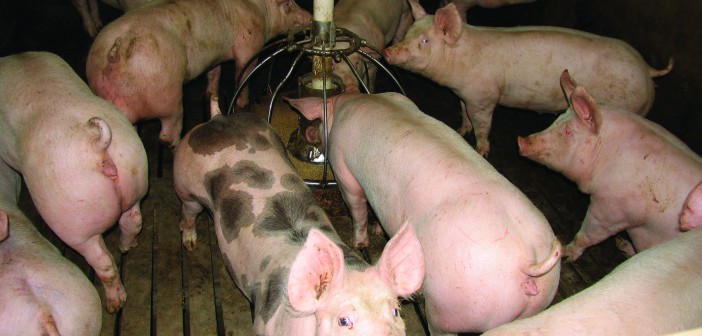In his latest Eastern European update, Russian journalist Vladislav Vorotnitkov analyses Russia’s gamble to invest in expanding pork production.
The staging of the World Cup in Russia coincided with some tough calls for the federal Government. A hike in VAT and an increase to the retirement age were probably the most controversial and unpopular decisions in the last decade, and there was no surprise when approval ratings slumped to their lowest level since 2014.
Another big decision, made on the eve of the tournament, was to approve soft loans of Rub220 billion ($3.2 billion) to the major pig companies, so they could boost pork production by 1.5 million tonnes liveweight by 2022. This indicated a major turnaround in the Government’s attitude towards the pig industry as the Agricultural
Ministry had, reportedly, not allocated aid for any new projects for almost two years. Russia produced 4.57mt of pork in 2017 and all analysts agree that, even with an increase in consumption, there is no chance that domestic demand will go above 4.9mt.
The Russian Union of Pork Producers (RUPP) Pork estimates that consumption per capita increased by 1.1% in the first half of 2018 – which was attributed to some extent to the World Cup and the associated influx of tourists.
So, the Ministry, which had been battling for two years to prevent an oversupply of pork, suddenly took a big step towards it.
One argument against stimulating growth was that an increase in production capacities by the biggest meat companies would destroy the backyard farms and small-scale farmers, leaving hundreds of thousands of people without means to exist. Concerns were raised as to what such a move would do to social tensions across Russia.
All bets on exports?
Speaking at a conference in Moscow on June 29, RUPP chairman Yuri Kovalev forecast that pork exports would increase from 80,000t this year to 300,000t by 2026. Asia will be the target, with China, Japan, South Korea and Vietnam on the hitlist.
However, Mr Kovalev admitted that to start exporting, Russia must persuade these countries to lift restrictions on Russian pork. The spread of African swine fever (ASF) has meant that pig products of Russian origin are unwelcome almost the world over. To establish export links, Mr Kovalev acknowledged that the veterinary and sanitary situation in Russia needs to be improved.
If there’s one thing that scares importers more than ASF being found on pig farms, it’s traces of the virus being found in meat products on grocery shelves, which keeps happening, while ASF marches on.
So, Russia could be in a position in five years’ time, in which production capacity is designed to release more than 6mt of pork onto the market per year, but domestic demand is below 4.9mt and there are miserable exports to traditional partners in the post Soviet space, most of whom are already taking steps to achieve self-sufficiency.
As such, the Government’s reasoning for allocating new subsidies to the pig industry remains unclear.
It has taken a step that could leave numerous small- scale farmers without a job and encourage competition in a market where prices are already uncomfortably low.
There’s also no guarantee that the Government would see those loans repaid, as many companies in the Russian pig industry struggle to generate enough margin to repay their current debts.




